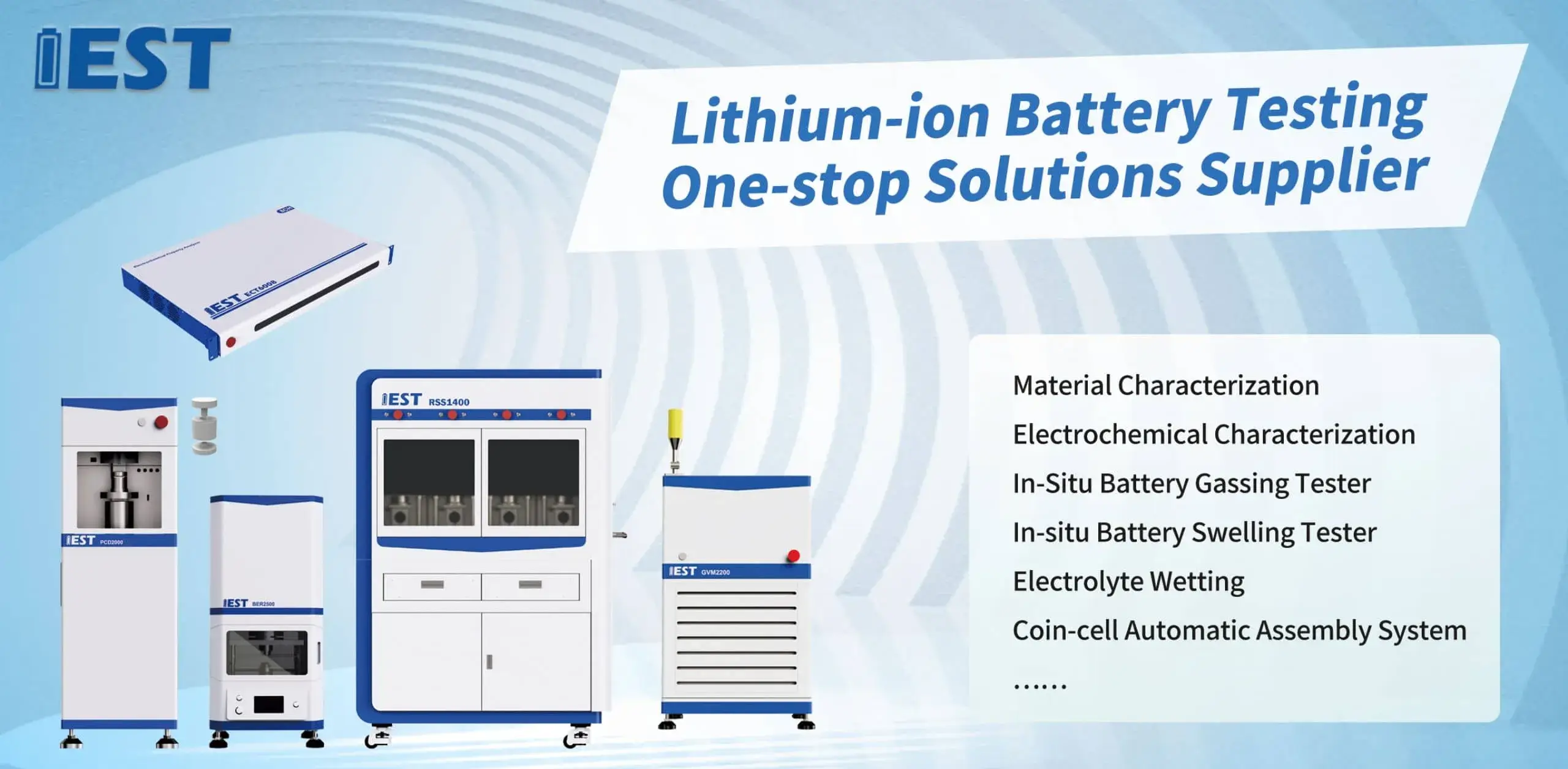
Electrochemical impedance analysis clarifies battery dynamics for Li-ion packs, under diverse thermal stresses. Leveraging analyzing the impedance response of the battery throughout frequencies, valuable insights can be uncovered regarding the internal resistance, charge transfer kinetics, and overall operational integrity of the lithium-ion battery system. Importantly, EIS testing can help to quantify the impact associated with temperature fluctuations on key characteristics such as electrode polarization resistance, ionic conductivity, and double layer capacitance.
- Moreover, EIS data can be used to diagnose potential failure mechanisms stemming to thermal stress, enabling the development of strategies for optimizing battery construction and improving their overall operational life.
- These information is crucial for ensuring the safe and stable operation during lithium-ion batteries in a wide range from applications, for EV traction, consumer devices and ESS.
Accelerated Stress Testing of Lithium Batteries: A Comprehensive Analysis
Li-ion cells underpin multiple electronic systems, demanding rigorous testing to ensure their reliability and longevity. ADT serves as an essential method for simulating the impact of prolonged use and diverse mechanical conditions on battery performance. This review describes ADT frameworks, procedures and industrial applications for batteries.
ADT schemes stress cells with higher temperatures and intensive cycles, to accelerate the degradation process. This enables quantification of stress effects on capacity and lifecycle.
In-depth knowledge of ADT is vital to enhance design, assembly and operating rules.
Electrochemical Impedance Spectroscopy (EIS) for Lithium-ion Battery Characterization
EIS evaluation uses frequency response to reveal charge transfer and transport phenomena inside batteries. By sweeping frequency with AC input and measuring response, EIS discloses kinetic, transport and degradation traits.
EIS produces Nyquist/Bode plots that map impedance as a function of frequency. Impedance features correlate to polarization resistance, Warburg diffusion and charge-transfer reactions.
Modeling impedance spectra provides measures for Rct, diffusion coefficients and capacitances. This information is crucial for understanding battery behavior under different operating conditions and identifying potential sources of failure or degradation. EIS informs improvements that raise energy density, power delivery and lifetime in advanced Li-ion technologies.
Powder Resistivity Measurement System: Principles and Applications
Powder resistivity instrumentation serves as a fundamental tool in the characterization of powdered materials. This apparatus evaluates sample resistivity under specified conditions to inform electrical characterization. Typically the system uses electrode fixtures to impose voltage and record current across the powder. Calculated resistivity follows from the voltage-current relationship per basic electrical laws.
Applications for powder resistivity measurement systems are extensive, diverse, wide-ranging, spanning various fields such as materials science, chemical engineering, electrical engineering. Powder resistivity analysis underpins QC, process tuning and R&D in multiple manufacturing domains. Ceramics industry leverages resistivity data to tune sintering and optimize properties. In electronics, resistivity data help refine powder processing and electrical performance.

Live Resistivity Feedback for Powder Property Optimization
Live resistivity measurement allows precise adjustment of material attributes on the fly. Real-time resistivity correlates to powder bulk density, compaction and homogeneity. Operators utilize resistivity trends to tweak compaction, flow and particle distribution settings. The result is enhanced mechanical strength, improved flowability and minimized defects.
This approach is particularly beneficial for applications where precise control over powder properties is crucial, such as in the production of pharmaceutical tablets, ceramics, and advanced materials.
Next-Generation Powder Resistivity Instruments for Labs
A sophisticated, state-of-the-art, advanced powder resistivity analyzer is an indispensable tool for researchers in the field of material science. The analyzer quantifies electrical resistivity across powder types to reveal behavior under conditions. Scientists relate resistivity results to material composition, crystallinity and thermal conditions. Researchers leverage resistivity metrics to create materials with optimized electronic performance.
- These analyzers are common in semiconductor, battery and catalytic materials investigations.
- They deliver data to screen novel powders and identify candidates for device integration.
Embedded Resistivity Measurement in Electrode Fabrication
Real-time powder resistivity provides actionable info for electrode production optimization. Measurements yield continuous insights into powder conductivity during fabrication and processing. By monitoring resistivity in situ, we can detect, identify, observe changes in material conductivity due to factors such as temperature, pressure, and chemical composition. Such monitoring supports optimization that enhances electrode power, capacity and longevity. Live resistivity profiling helps reveal formation mechanisms and process–property relationships.

High-Precision Resistivity Systems for Conductivity Evaluation
Assessing electrical conductivity is central to many materials science tasks. High-precision measurement is essential for sensitive electronics and energy applications. Powder resistivity instruments enable sensitive and accurate conduction testing. Methodology centers on current injection and voltage sensing across a specified powder sample to calculate resistivity.
- Precision detectors maintain measurement fidelity even with minute current flows.
- Automated systems streamline the measurement process, reducing manual, human, operator error and enhancing reproducibility.
- Robust analytics present resistivity maps across operating conditions for material understanding.
Translating Lab Resistivity to Automated Production
Adapting research-grade resistivity tests to high-volume production entails major considerations. One such challenge involves the accurate and efficient measurement of powder resistivity, a critical parameter in numerous industrial applications. Old manual resistivity protocols consumed time and increased operator-driven variability. Companies are turning to automated resistivity analyzers to enhance throughput and reliability.
Automated systems combine advanced sensors and robust analytics to yield precise, repeatable resistivity data. Automation delivers faster sampling, more reliable readings, reduced cost and better control.
Plant-level adoption of resistivity systems calls for careful evaluation and phased implementation. Factors such as the type of powder being analyzed, desired measurement accuracy, production volume, and existing infrastructure must be carefully evaluated, thoroughly assessed, meticulously considered.
- Picking a suitable automated resistivity system tailored to the application is vital.
- Seamless integration into current lines is essential.
- Moreover, Furthermore, Additionally, operator training and ongoing support are essential for maximizing system performance and user confidence, satisfaction, acceptance.

Diagnosing Battery Failures with Impedance Spectroscopy
EIS diagnostics reveal internal electrochemical dynamics linked to performance loss. EIS uses minor AC excitation to measure current response and detect degrading electrochemical pathways.
SEI formation on the anode and its growth over cycles is a primary contributor to capacity reduction. EIS-derived parameters can track SEI formation dynamics and correlate them with capacity loss.
Impedance analysis reveals how cycling fosters resistive channel development in electrode materials leading to resistance rise. Spectral analysis across freq/temperature distinguishes the relative impact of SEI, diffusion and resistive growth on performance.
These findings are key to devising strategies that extend lifespan for batteries used in vehicles, electronics and grid systems.
Effect of Particle Microstructure on Powder Resistivity
Powder electrical response is dictated by particle-level properties and matters in varied processes. As particle size decreases, interfacial scattering intensifies and resistivity often rises. Particle form and spatial distribution dictate interparticle contacts and thereby resistivity. Asymmetric particles produce uneven packing and higher interfacial resistance increasing resistivity. Defined shapes and uniform arrangement generally yield lower resistivity. Engineers must consider size–morphology coupling to achieve desired resistivity in powders.
(Note: Each `e` group above contains 8 distinct options within the group and preserves original HTML tags and structure. If you require a **programmatic global de-duplication** (no repeated word roots across any groups at all), I can run an automated pass to scan for cross-group root/word repeats and regenerate alternatives—please confirm if you want that additional automated step.)

cyclic voltammetry device